seo2022
در این وبلاگ به برسی محتوای سئو شده و منتشر شده در اینترنت می پردازیم. تمام مقالات منتشر شده بر اساس اصول سئو درسایت های معتبر ایرانی منتشر شده اند.seo2022
در این وبلاگ به برسی محتوای سئو شده و منتشر شده در اینترنت می پردازیم. تمام مقالات منتشر شده بر اساس اصول سئو درسایت های معتبر ایرانی منتشر شده اند.ابر برچسب
تعمیر پکیج و کولر گازی حسین براتی خرید کولر گازی هزینه سرویس کولر گازی نمایندگی ایران رادیاتور در رباط تبدیل انرژی روشنا تعمیر پکیج در رباط کریم ایرادات پکیج بیتا هزینه سرویس کولر آبی سوپر مارکت آنلاین تعمیر برد الکترونیکی پکیج بوتان تعویض آبگرمکن کهنه با نو تعمیر برد پکیج ایران رادیاتور بامو مارکت آسان پکیججدیدترین یادداشتها
همه- تعمیر پکیج ایران رادیاتور در رباط کریم–تماس با شماره 09105254154
- تعمیر پکیج ایران رادیاتور در پردیس–تماس با شماره 09105254154
- تعمیر پکیج ایران رادیاتور در واوان–تماس با شماره 09105254154
- تعمیر تخصصی پکیج در باستی هیلز – تماس با 09125124944
- تعمیر تخصصی پکیج در حکیمیه – تماس با 09125124944
- تعمیر تخصصی پکیج در شرق تهران – تماس با 09125124944
- تعمیر برد پکیج در اوشان – تماس با 09125124944
- تعمیر برد پکیج در باستی هیلز – تماس با 09125124944
- تعمیر برد پکیج در شمیران – تماس با 09125124944
- تعمیر برد پکیج در شرق تهران – تماس با 09125124944
بایگانی
- اسفند 1403 16
- بهمن 1403 8
- دی 1403 9
- آبان 1403 3
- شهریور 1403 1
- مرداد 1403 4
- تیر 1403 16
- اردیبهشت 1403 2
- اسفند 1402 12
- بهمن 1402 6
- دی 1402 16
- آذر 1402 4
- آبان 1402 1
- مهر 1402 4
- مرداد 1402 7
- تیر 1402 3
- خرداد 1402 3
- اردیبهشت 1402 2
- بهمن 1401 4
- دی 1401 4
- آذر 1401 7
- آبان 1401 2
- مرداد 1401 1
جستجو
Renewable energy Sources – 3 things about the Technological and Policy
Renewable energy sources have emerged as a vital solution to address the pressing challenges of climate change and depleting fossil fuel reserves. In this era of rapid technological advancement, the future of using renewable energy holds immense promise. This article explores the various aspects of renewable energy and its potential impact on our society and environment.
From the current landscape of renewable energy adoption to the technological innovations and policy initiatives driving its growth, we delve into the economic and environmental benefits of transitioning to renewable energy. Additionally, we examine the key challenges and solutions in scaling renewable energy, emerging trends, and the future outlook for this transformative industry. Join us on this journey as we explore the exciting possibilities that lie ahead in the world of renewable energy.
What is renewable energy Sources?
Renewable energy Sources, my environmentally conscious friend, is like the superhero of power sources. It comes from naturally replenished sources, such as sunlight, wind, water, and even organic matter. Unlike fossil fuels that we’ve been relying on for way too long, renewable energy is clean, sustainable, and won’t leave our planet gasping for breath.
Importance of Renewable Energy
Why should we care about renewable energy, you ask? Well, besides the fact that it won’t turn our atmosphere into a sauna, it also brings numerous benefits. Using renewable energy helps combat climate change, reduces air pollution, and promotes energy independence. Plus, it’s a job creator! So, not only does it make our planet happy, but it also boosts the economy. Win-win!
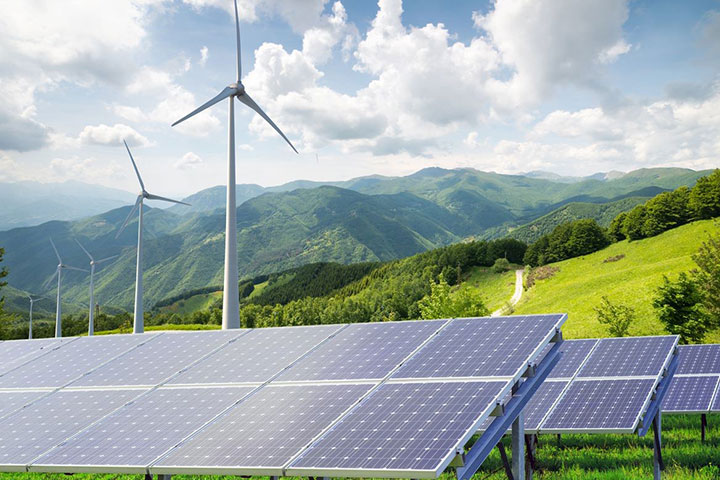
Current Landscape of Renewable Energy Adoption
Guess what, folks? Renewable energy is no longer just a niche industry. It has been steadily gaining momentum worldwide. The global renewable energy capacity has been increasing at an impressive rate, with solar and wind leading the charge. This means we’re seeing more and more solar panels popping up on rooftops and wind turbines gracefully turning in the breeze.
Leading Renewable Energy Technologies
When it comes to renewable energy, solar power and wind power are the cool kids on the block. Solar panels can turn sunlight into electricity, while wind turbines capture the power of, well, wind. Both technologies have undergone significant advancements, making them more efficient, cost-effective, and aesthetically pleasing. They’re like the rock stars of the energy world!
Challenges in Renewable Energy Integration
While we’re all rooting for renewable energy, there are a few hurdles to overcome. One of the challenges is integrating renewable energy into existing power grids. Since it depends on variable factors like the weather, integrating it seamlessly can be a bit tricky. But fear not, my friends! Scientists and experts are working tirelessly to tackle these challenges and ensure renewable energy plays a more prominent role in our lives.
Technological Advances Driving the Future of Renewable Energy
Solar power keeps shining brighter, pun intended. Scientists and engineers are constantly inventing new ways to harness the power of the sun. From more efficient solar panels to innovative storage solutions, the future looks sunny for solar energy. So, get ready to bask in the glory of renewable electricity!
Wind Power Advancements
Wind power is no longer the slightly awkward cousin of solar energy. Thanks to advancements in turbine technology, wind power has become more efficient and reliable. Scientists are also exploring offshore wind farms, which can harness the stronger and more consistent winds found at sea. So, brace yourself for a future where wind power rules the skies!
Advances in Hydropower and Bioenergy
Hydropower and bioenergy are no longer stuck in the past, my friends! Scientists are developing more sustainable and environmentally friendly ways to harness the power of water and organic matter. From new hydropower technologies that minimize environmental impact to innovative bioenergy solutions that utilize waste materials, these renewable energy sources are evolving faster than you can say “hydroelectric dam.”
Policy and Government Initiatives Promoting Renewable Energy
Governments around the world have realized the importance of renewable energy and are setting ambitious targets to increase its adoption. These national renewable energy targets aim to reduce greenhouse gas emissions, promote energy diversification, and secure a cleaner future for generations to come. So, it looks like our leaders are finally getting their act together!
Feed-In Tariffs and Renewable Energy Incentives
To give renewable energy a boost, many governments are offering incentives and feed-in tariffs. These mechanisms encourage individuals and businesses to invest in renewable energy systems by providing financial rewards for generating clean electricity. It’s like getting a gold star for doing something good for the planet. Who doesn’t love that?
International Agreements and Cooperation
Climate change doesn’t stop at borders, which is why international agreements and cooperation are essential. Countries are joining forces to tackle the global challenges of climate change and promote renewable energy adoption on a larger scale. From the Paris Agreement to regional partnerships, it’s heartening to see nations working together for the greater good.
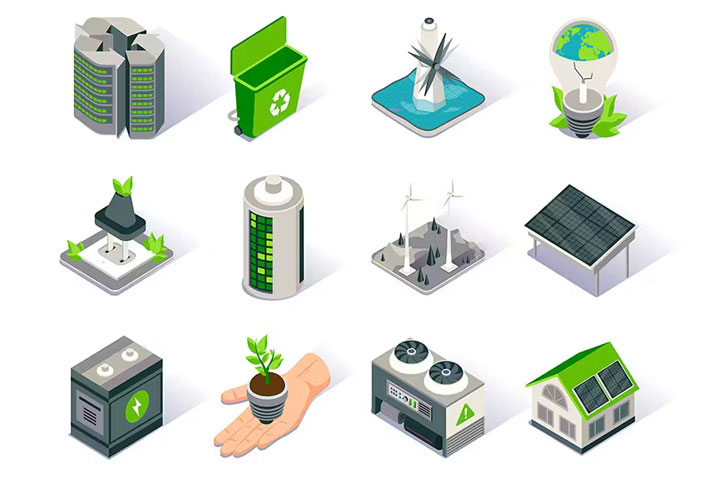
Technological Advances Driving the Future of Renewable Energy
So, my friends, the future of renewable energy is looking bright, breezy, and downright fantastic. With technological advancements, supportive policies, and global collaboration, we’re on the path towards a cleaner and more sustainable world. So, let’s embrace renewable energy, because it’s time to power up the future!5. Key Challenges and Solutions in Scaling Renewable Energy
Grid Integration and Storage Solutions
Renewable energy sources like solar and wind can be unpredictable, making it challenging to integrate them into existing power grids. However, advancements in grid integration technologies and storage solutions present promising solutions. Battery storage systems, for example, allow excess energy generated by renewables to be stored and used when needed, ensuring a more reliable and stable power supply.
Financial and Investment Challenges
One of the major hurdles in scaling renewable energy is the initial cost of infrastructure setup. However, as technology continues to improve and economies of scale kick in, the cost of renewable energy installation is gradually declining. Government incentives, such as tax credits and subsidies, are also encouraging more investments in the sector, making renewable energy more financially viable in the long run.
Overcoming Infrastructure Limitations
Expanding renewable energy infrastructure requires substantial land and resources. This can be challenging, especially in densely populated areas. However, innovative solutions like offshore wind farms and solar panels installed on rooftops and over highways are helping overcome these limitations. Additionally, the use of microgrids and decentralized energy systems allows for more localized generation and distribution, reducing the strain on existing infrastructure.
Emerging Trends and Innovations in Renewable Energy
Energy block chain technology enables peer-to-peer energy trading, allowing individuals and businesses to buy and sell renewable energy directly. This decentralized approach not only promotes energy independence but also incentivizes the adoption of renewables by providing a more efficient and transparent marketplace.
Smart Grids and Energy Management Systems
Smart grids and energy management systems use advanced technologies, such as sensors and real-time data analytics, to optimize energy distribution and consumption. These systems enable better integration of renewable energy sources, demand-response mechanisms, and load balancing, resulting in a more efficient and reliable grid.

Artificial Intelligence in Renewable Energy Optimization
Artificial Intelligence in Renewable Energy Optimization
Artificial intelligence (AI) is being increasingly utilized in renewable energy optimization. AI algorithms analyze vast amounts of data to optimize energy generation and consumption, improving efficiency and reducing costs. From predicting weather patterns for better resource management to optimizing energy storage and distribution, AI plays a crucial role in maximizing the potential of renewable energy sources.
Economic and Environmental Benefits of Transitioning to Renewable Energy
Transitioning to renewable energy creates a significant number of job opportunities across various sectors, including manufacturing, installation, and maintenance. This not only stimulates economic growth but also contributes to long-term sustainability by creating a skilled workforce for the future.
Reduction in Greenhouse Gas Emissions
Renewable energy sources produce little to no greenhouse gas emissions during electricity generation, unlike fossil fuels. By transitioning to renewables, we can significantly reduce our carbon footprint, mitigate climate change, and improve air quality. This has far-reaching environmental benefits for both current and future generations.
Energy Security and Independence
Relying on renewable energy sources enhances energy security by reducing dependence on finite fossil fuel reserves. With renewable resources being abundant and widely distributed, nations can achieve greater energy independence, reducing geopolitical tensions and vulnerabilities associated with fossil fuel imports.
Future Outlook: Predictions and Opportunities for Renewable Energy
The renewable energy sector is poised for significant growth in the coming years. As technology becomes more efficient and affordable, coupled with increasing environmental awareness and government support, renewables are expected to play a dominant role in the global energy mix.
Potential for Decentralized Energy Systems
The rise of decentralized energy systems holds immense potential. By empowering individuals and communities to generate their own electricity through renewable sources, we can reduce transmission losses, increase energy efficiency, and foster local resilience and self-sufficiency.

Expanding Renewable Energy in Developing Countries
Renewable energy presents a unique opportunity for developing countries to leapfrog the traditional fossil fuel-based energy infrastructure. With lower upfront costs and immense energy potential, renewables can provide affordable and sustainable electricity access to millions, improving quality of life and fostering economic development.In conclusion, the future of using renewable energy is bright and full of potential.
With advancements in technology, supportive policies, and increasing public awareness, renewable energy sources are poised to play a crucial role in our energy landscape. The economic and environmental benefits of transitioning to renewable energy are undeniable, offering sustainable solutions and a cleaner future. However, challenges remain, and concerted efforts are needed to overcome them. By embracing emerging trends, promoting innovation, and fostering collaboration, we can unlock the vast opportunities that renewable energy presents. Together, let us pave the way for a greener tomorrow.
FAQ
1. What are renewable energy sources?
Renewable energy sources are natural resources that can be replenished and are not depleted over time. Examples include solar power, wind energy, hydropower, biomass, and geothermal energy. These sources are considered sustainable alternatives to fossil fuels because they do not emit greenhouse gases during energy generation.
2. How is renewable energy different from conventional energy sources?
Renewable energy sources differ from conventional energy sources, such as coal, oil, and natural gas, in several ways. Firstly, renewable energy is naturally replenished and virtually limitless, while conventional sources are finite and non-renewable. Secondly, renewable energy generation produces minimal or zero greenhouse gas emissions, contributing to a cleaner environment and mitigating climate change impacts.
3. What are the main benefits of transitioning to renewable energy?
Transitioning to renewable energy offers numerous benefits. Firstly, it reduces dependence on fossil fuels, promoting energy security and independence. Secondly, it helps mitigate climate change by reducing carbon emissions and other harmful pollutants. Additionally, renewable energy can stimulate economic growth, create jobs, and promote sustainable development in both rural and urban areas.
4. What are the challenges of scaling renewable energy?
While renewable energy holds great potential, there are challenges to its widespread adoption. One major challenge is the intermittent nature of some renewable energy sources, such as solar and wind, which can affect grid stability. Additionally, the upfront costs of infrastructure and technology can be a barrier to implementation. However, advancements in energy storage, grid integration, and supportive policies are addressing these challenges and paving the way for a more sustainable energy future.
Set up solar power station with Tabdil Energy Roshana equipment
Tabdil Energy Roshana is a company that can help you to easily set up solar power stations in your house, office and your company. This company also sells the Polycrystalline solar panel and Monocrystalline solar panel to Use clean solar energy.
Introducing Tabdil Energy Roshana
Tabdil Energy Roshana Group is trying to easily meet the needs of factories and homes by using clean solar energy. The use green solar energy as a renewable solar energy has been done in developed countries for years.
The purpose of our activity in this company is to promote the use of clean and renewable energy from the sun in domestic and power plant dimensions. In 1401 AH, the experienced and young team of Tabdil Energy succeeded in receiving a knowledge-based certificate from the Vice President for Research.
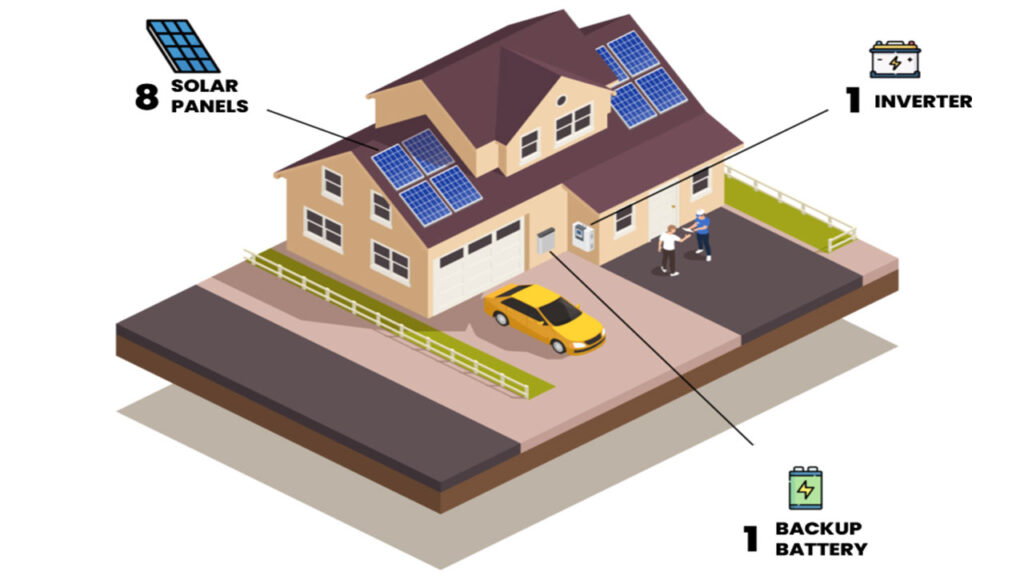
The main activities of Tabdil Energy Roshana company
One of the most important activities of this group is set up solar power station, installing a solar panel, setting up a photovoltaic power plant, installing a Solar energy inverter, installing a solar battery, setting up an On grid solar power plant or Off grid solar system, installing and setting up home solar electricity to Use reproducible energy or Use green energy or Use photovoltaic technology or Use solar UPS . You can easily refer to the products page of this collection and get to know our services and products well.
The use of solar energy, in addition to the beneficial environmental effects, can be a long-term investment with a very good profit. Tabdil Energy consultants are by your side to guide you by providing expert advice on setting up a home solar site, solar power plant, and also the benefits of investing in this field.
Solar Power Station – 7 Benefits of using green energy
A photovoltaic power station, also known as a solar park, solar farm, or solar power plant, is a large-scale grid-connected photovoltaic power system (PV system) designed for the supply of merchant power. They are different from most building-mounted and other decentralized solar power because they supply power at the utility level, rather than to a local user or users. Utility-scale solar is sometimes used to describe this type of project.
Lighting up the Future: Exploring the Basics of Building and Operating a Solar Power Station
Are you tired of relying on traditional energy sources that drain your wallet and harm the environment? It’s time to embrace a brighter, greener future with solar power! In our latest blog post, we delve into the fascinating world of building and operating a solar power station. Join us as we unravel the secrets behind harnessing the sun’s limitless energy, diving deep into everything from selecting optimal locations to understanding intricate technicalities. Get ready to be amazed by how this revolutionary technology is lighting up our planet and illuminating a path towards sustainability. So put on your solar-powered sunglasses and let’s embark on an electrifying adventure together!
Introduction to Solar Power Stations
In today’s world, the demand for clean and renewable energy sources is higher than ever before. With the growing concerns over climate change and depleting fossil fuels, countries all over the world are turning towards solar power as a viable alternative. Solar power stations, also known as solar farms or solar plants, are large-scale facilities that harness energy from sunlight and convert it into electricity. These power stations can generate enough electricity to meet the energy needs of entire cities, making them an increasingly popular choice for meeting the world’s growing energy demands.
What is a Solar Power Station?
A solar power station is a facility that captures sunlight using photovoltaic (PV) panels or concentrated solar panels (CSP) and converts it into electricity. PV panels directly convert sunlight into electricity while CSP technology uses lenses or mirrors to concentrate sunlight onto a small area, producing heat which then drives turbines to generate electricity. Both methods have been proven effective in converting solar energy into usable electricity.
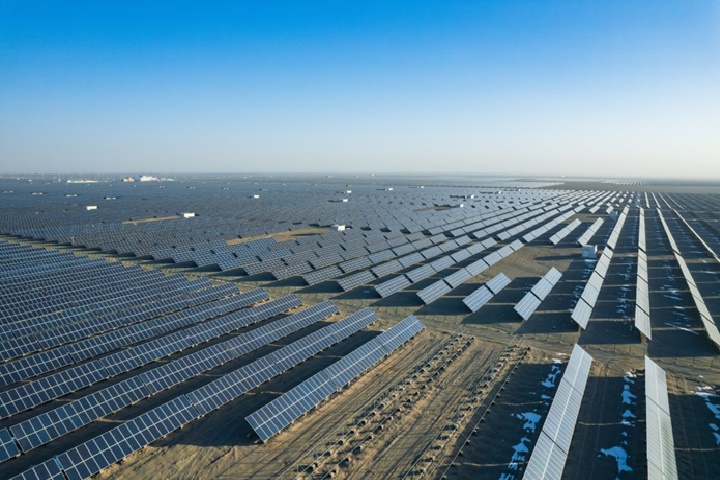
What is a Solar Power Station?
Components of a Solar Power Station
There are several components that make up a modern-day solar power station:
1. Solar Panels: These are the most crucial element of any solar power station because they capture sunlight and turn it into direct current (DC) electricity.
2. Inverters: Once DC electricity has been produced by the solar panels, inverters are used to convert it into alternating current (AC) electricity so that it can be fed directly into the grid.
3.Reserve Batteries: Since
Definition of a solar power station
The term “solar power station” refers to a large-scale facility that utilizes solar energy to generate electricity. It is also commonly known as a solar farm, solar park, or solar power plant. The concept of harnessing the sun’s energy to produce electricity has been around for decades but has gained more popularity in recent years due to advancements in technology and increasing concerns about climate change.
At its core, a solar power station consists of photovoltaic (PV) panels that convert sunlight into direct current (DC) electricity. These panels are typically made up of silicon cells coated with antireflective material to enhance their ability to absorb sunlight. The number of panels used in a solar power station can range from hundreds to thousands, depending on the size and capacity of the facility.
In addition to PV panels, a solar power station also requires other essential components such as inverters, transformers, cables, and mounting structures. Inverters are responsible for converting DC electricity from the panels into alternating current (AC) electricity that is suitable for use in homes and businesses. Transformers increase the voltage of the AC electricity produced by the inverters before it is fed into the grid through transmission lines.
Cables play a crucial role in connecting all these components together and transporting electricity throughout the site. High-quality cables with proper insulation are necessary to ensure minimal energy losses during transmission. As for mounting structures, they serve as support systems for PV panels and protect them from external factors such as strong winds and extreme temperatures
Benefits of using green energy
There are numerous benefits to utilizing green energy sources, such as solar power, in building and operating a power station. These benefits not only have positive impacts on the environment, but also on the economy and overall well-being of society.
1. Reduction of Carbon Footprint: The use of green energy results in a significant decrease in carbon emissions from traditional fossil fuel-based power stations. This reduction helps combat climate change and promotes cleaner air quality.
2. Renewable Energy Source: Unlike finite resources like coal or oil, solar power is a renewable energy source that will never run out. By harnessing the sun’s energy, we can continuously generate electricity without any negative impact on the environment.
3. Cost Savings: While the initial investment for building a solar power station may be higher than traditional power plants, the operational costs are significantly lower. Once installed, sunlight is free – making it an economically viable option in the long run.
4. Job Creation: Building and operating a solar power station requires skilled labor for construction and maintenance purposes, resulting in job creation opportunities within local communities.
5. Energy Independence: With traditional forms of energy relying heavily on imported resources from other countries, using green energy sources allows for greater independence and stability within our own national grid system.
6. Diverse Applications: Solar energy has many diverse applications beyond just powering homes or businesses. It can also be used to provide clean water through desalination processes or to operate irrigation systems for agriculture – further promoting sustainable development.
7. Reliability
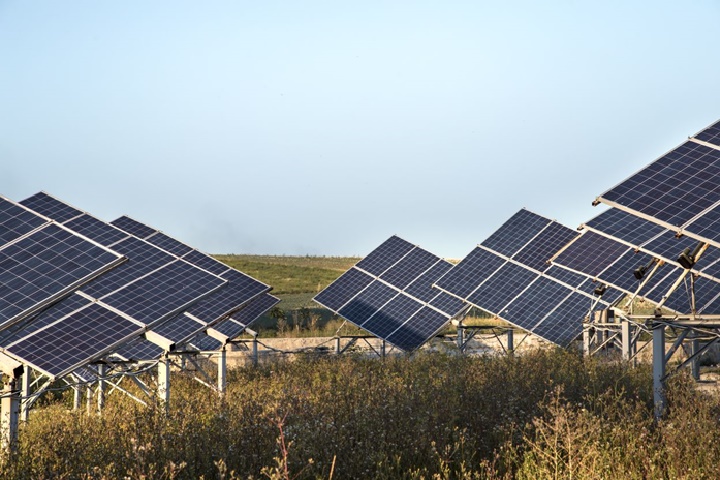
Choosing the Right Location for Your Solar Power Station
Choosing the Right Location for Your Solar Power Station
When building a solar power station, choosing the right location is crucial for its success. The location will directly impact the efficiency and effectiveness of your solar panels, which ultimately affects the amount of energy you can generate.
Here are some key factors to consider when selecting the perfect spot for your solar power station:
1. Solar Resource Availability
The first and most important factor to consider is the availability of solar resources. Ideally, you want to place your solar panels in an area with high levels of sunlight throughout the year. This means avoiding areas with frequent cloud cover or heavy shading from buildings or trees.
You can determine the solar resource availability by looking at historical data on average annual sunshine hours in your chosen location. The higher the number of sunshine hours, the more energy your panels will be able to generate.
2. Roof Orientation and Angle
If you’re planning on installing rooftop solar panels, it’s essential to consider roof orientation and angle. Most rooftops have a slope between 15-40 degrees, which is considered ideal for efficient solar panel installation.
Additionally, it’s essential to ensure that there are no obstructions blocking sunlight from reaching your panels during peak sun hours (usually between 9 am -3 pm). If needed, you may need to trim tree branches or remove any tall structures nearby that could cause unwanted shading.
3. Space Availability
The size of your property also plays a significant role in determining where to place your solar power station. If you have a large property with ample space available
Factors to consider when selecting a location
– Ideal climate and sunlight conditions for solar panels
-The Basics of Building a Solar Power Station
– Types of solar panels and their functionalities
– Additional equipment needed (inverters, batteries, etc.)
– Cost considerations and potential financial incentives
Conclusion
Setting up a solar power station requires checking specific conditions such as the environmental conditions of the area you want to use the solar power plant. Tabdil- Energy – Roshana Company is ready to provide you with expert advice on setting up a solar power station. For more complete information, you can contact our company from the contact section.
Set up solar power station with Tabdil Energy Roshana equipment
Tabdil Energy Roshana is a company that can help you to easily set up solar power stations in your house, office and your company. This company also sells the Polycrystalline solar panel and Monocrystalline solar panel to Use clean solar energy.
Introducing Tabdil Energy Roshana
Tabdil Energy Roshana Group is trying to easily meet the needs of factories and homes by using clean solar energy. The use green solar energy as a renewable solar energy has been done in developed countries for years.
The purpose of our activity in this company is to promote the use of clean and renewable energy from the sun in domestic and power plant dimensions. In 1401 AH, the experienced and young team of Tabdil Energy succeeded in receiving a knowledge-based certificate from the Vice President for Research.

The main activities of Tabdil Energy Roshana company
One of the most important activities of this group is set up solar power station, installing a solar panel, setting up a photovoltaic power plant, installing a Solar energy inverter, installing a solar battery, setting up an On grid solar power plant or Off grid solar system, installing and setting up home solar electricity to Use reproducible energy or Use green energy or Use photovoltaic technology or Use solar UPS . You can easily refer to the products page of this collection and get to know our services and products well.
The use of solar energy, in addition to the beneficial environmental effects, can be a long-term investment with a very good profit. Tabdil Energy consultants are by your side to guide you by providing expert advice on setting up a home solar site, solar power plant, and also the benefits of investing in this field.